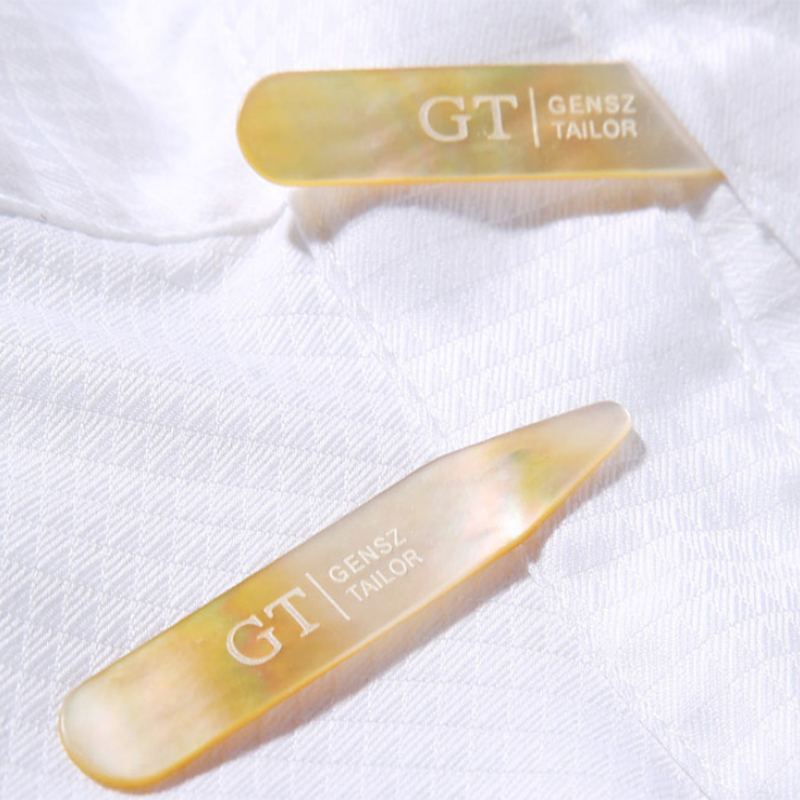How to Import the Best Chinese Freshwater or River Shells from China?
Finding reliable sources for high-quality freshwater shells challenges many importers. Poor quality control and improper handling often lead to damaged goods, wasted resources, and disappointed customers.
To import the best Chinese freshwater shells, you must understand the different varieties available, identify premium sourcing locations, establish clear quality assessment criteria, and partner with experienced suppliers who employ proper handling techniques. Following these guidelines ensures you receive top-grade materials that meet your specific requirements.
China has been the world’s leading source of freshwater shells for decades, thanks to its vast lake and river systems that provide ideal environments for various mollusk species. However, quality varies dramatically based on specific sourcing regions and handling practices. This guide will help you navigate the complexities of importing these valuable natural materials.
How Many Kinds of River Shells Does China Have?
Many importers struggle with identifying the right shell type for their specific applications. Understanding the distinct characteristics of each variety is essential for successful sourcing.
China primarily exports three main types of freshwater shells: Cotton Clam (Anodonta woodiana), Pearl Clam (used as mother shells in pearl cultivation), and Ma Bang (primarily used for pearl nuclei production). Each variety offers unique properties suitable for different applications in decorative arts, jewelry making, and industrial uses.

Chinese cotton river shells-Anodonta woodiana

Pearl river shells-pearl clam

"Ma Bang"-small river shells
Understanding Chinese Freshwater Shell Varieties
Each shell type offers specific advantages for different applications:
| Shell Type | Scientific Name | Key Characteristics | Primary Applications |
|---|---|---|---|
| Cotton Clam | Anodonta woodiana | Large size, smooth texture, consistent thickness | Decorative inlays, architectural elements |
| Pearl Clam | Various species | Mother shells for pearl cultivation, good iridescence | Jewelry components, decorative items |
| Ma Bang | Regional species | Thick, dense structure | Pearl nuclei production, industrial uses |
Cotton Clams (Anodonta woodiana) are prized for their consistent structure and smooth surface, making them ideal for processing into decorative elements. Their relatively large size allows for efficient material yield during manufacturing.
Pearl Clams represent the foundation of China’s freshwater pearl industry. These shells host the cultivated pearls during formation and are later harvested for their nacre-rich material. The shells themselves become valuable byproducts after the pearl cultivation process.
Ma Bang shells feature exceptionally dense and thick structures, making them particularly suitable for creating pearl nuclei. The consistent density throughout the shell material ensures predictable results when processed into spherical cores for pearl cultivation.
Understanding these distinctions helps importers select the appropriate material for their specific applications, ensuring both cost efficiency and product performance.
Where Do the Main Chinese River Shells Come From?
Many buyers experience inconsistent quality due to poor understanding of regional differences. China’s diverse freshwater ecosystems produce shells with varying characteristics based on local conditions.
The finest Chinese freshwater shells come from three renowned lakes: Dongting Lake in Hunan Province (considered the best quality worldwide), Poyang Lake in Jiangxi Province (good quality but with some color variations), and Tai Lake in Zhejiang Province (limited supply due to smaller size). Dongting Lake shells are particularly valued for their exceptional whiteness and thickness.
Prime Sourcing Locations for Quality Shells
Each major sourcing location produces shells with distinctive qualities:
| Location | Quality Ranking | Notable Characteristics | Availability |
|---|---|---|---|
| Dongting Lake, Hunan | Premium (Best worldwide) | Exceptional whiteness, minimal color variations, 4.5-5mm thickness | Moderate, carefully managed |
| Poyang Lake, Jiangxi | Good | Good thickness, some color variations | Good availability |
| Tai Lake, Zhejiang | Variable | Smaller harvest area, variable quality | Limited due to lake size |
Dongting Lake, the largest freshwater lake in China, provides ideal growing conditions for premium-quality shells. The lake’s specific water chemistry and ecosystem create optimal conditions for mollusk development, resulting in shells with superior thickness, whiteness, and consistency. These shells typically have minimal color variations (sometimes none), making them highly desirable for decorative applications where appearance is critical.
Poyang Lake, while still producing good quality shells, typically yields materials with more color variations and slightly less consistent thickness. However, these shells still offer excellent value for many applications and are generally superior to shells sourced from outside China.
Tai Lake shells, while sometimes of good quality, come from a much smaller ecosystem, resulting in limited availability. The restricted harvest area makes these shells less common in international trade compared to those from the larger lakes.
Understanding these regional differences allows importers to make informed decisions based on their specific requirements for whiteness, thickness, and overall quality.
How to Judge River Shell Quality?
Inexperienced buyers often struggle to evaluate shell quality effectively, leading to inconsistent products. Developing systematic quality assessment methods ensures reliable sourcing.
Quality assessment of river shells should focus on three key factors: length (at least 15cm for mature shells), whiteness (Dongting Lake shells offer up to 3/5 white areas compared to just 1/6 in lower quality shells), and lip thickness (4mm for decorative applications; 5-6mm for pearl nuclei). These metrics help ensure you receive shells suitable for your specific applications.
Essential Quality Evaluation Criteria
Professional buyers assess river shell quality using these key metrics:
| Quality Factor | Measurement Standard | Premium Quality Indicators | Applications |
|---|---|---|---|
| Length | Measured end-to-end | Minimum 15cm for mature shells | Indicator of age and overall development |
| Whiteness | Percentage of shell without color variations | Dongting shells: up to 3/5 white area | Decorative uses require maximum whiteness |
| Shell Lip Thickness | Measured at thickest point | 4mm for decorative applications; 5-6mm for pearl nuclei | Thickness correlates with age (5+ years for 5-6mm) |
Shell length serves as a primary indicator of the shell’s maturity and overall development. First-year freshwater shells typically measure only 6-7mm in length, with growth of 1-2cm annually depending on water conditions. Premium quality shells should reach at least 15cm in total length, indicating proper development and maturity.
The whiteness factor is particularly critical for decorative applications. Lower quality shells often display significant color variations (often called "dapple color") throughout the interior surface. Premium Dongting Lake shells can achieve a white area covering approximately 60% of the shell’s interior, while inferior shells might offer only 15-20% whiteness.
Shell lip thickness directly correlates with the age and development of the shell. For decorative applications like shell mosaic, tiles, or buttons, a thickness of approximately 4mm is generally optimal. For pearl nucleus production, thicker shells (5-6mm) are preferred, typically requiring at least five years of growth in favorable water conditions.
These objective metrics provide a systematic framework for evaluating shell quality, ensuring that importers can clearly communicate their requirements and verify that received materials meet specifications.
How to Choose the Best Supplier?
Many importers face challenges with damaged shipments due to improper handling. Beyond pricing, supplier selection should prioritize sourcing knowledge and logistics expertise.
When selecting a river shell supplier, evaluate their sourcing transparency (preferably from Dongting Lake), shell quality metrics (whiteness, thickness, brightness), and most importantly, their loading and handling procedures. Quality suppliers employ specialized two-person teams for loading, as shells are both fragile and sharp, requiring careful handling rather than over-shoulder tossing.
Critical Supplier Selection Factors
Finding the right partner requires thorough evaluation:
| Selection Factor | Evaluation Method | Best Practice Indicators |
|---|---|---|
| Sourcing Transparency | Direct questioning about harvest locations | Clear documentation of Dongting Lake or other premium sources |
| Shell Quality Metrics | Sample evaluation for whiteness, thickness, brightness | Consistent quality meeting specified parameters |
| Loading Procedures | Video documentation or site visit | Two-person handling teams with proper techniques |
| Packaging Methods | Sample or photos of previous shipments | Custom protective packaging for fragile materials |
| Track Record | Client references, especially international buyers | History of successful export shipments |
Beyond basic price considerations, the supplier’s sourcing knowledge and relationships with premium harvesting regions can significantly impact product quality. Suppliers with direct access to Dongting Lake shells typically offer superior materials compared to those sourcing from mixed or unspecified locations.
The loading process itself requires special attention due to the fragile yet sharp nature of river shells. Professional suppliers employ specialized two-person teams that carefully handle the materials rather than using improper methods like shoulder-tossing that can cause microscopic fractures. These fractures may not be immediately visible but can lead to product failure during later processing.

choosing and packing the river shells

Our river shells loading way
Because shells are both fragile and potentially hazardous due to sharp edges, proper handling requires trained personnel working in coordinated teams. This specialized handling represents a significant value-add that distinguishes professional suppliers from inexperienced operations, ultimately reducing waste and ensuring consistent quality upon arrival.
Conclusion
Importing the finest Chinese freshwater shells requires understanding the three main varieties, prioritizing Dongting Lake sources, evaluating quality based on length, whiteness, and thickness, and selecting suppliers with proper handling expertise. These factors together ensure successful procurement of these valuable natural materials.







